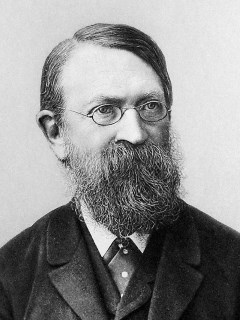
Publication details
Publisher: Springer
Place: Berlin
Year: 1992
Pages: 147-173
Series: Boston Studies in the Philosophy of Science
ISBN (Hardback): 9789401050975
Full citation:
, "From psychophysics to phenomenalism", in: The invention of physical science, Berlin, Springer, 1992


From psychophysics to phenomenalism
Mach and Hering on color vision
pp. 147-173
in: Mary J. Nye, Joan L. Richards, Roger H. Stuewer (eds), The invention of physical science, Berlin, Springer, 1992Abstract
At the end of his famous 1672 paper in which he presented his new theory of light and colors, Isaac Newton admitted: "But to determine more absolutely, what light is, ... and by what modes or actions it produceth in our minds the phantasms of colours, is not so easie. And I shall not mingle conjectures with certainties."1 Although Newton later in the Optics would occasionally "mingle conjectures' about how the human eye 'sees' color, his theory was primarily a theory of light, a physical theory with light rays, prisms, angles of refraction, lenses and barycentric diagrams as its chief working objects. Not until the nineteenth century did color become a fully subjective phenomenon, an aspect of nature impossible to consider apart from human verbal reports about visual experience. This shift in the conceptual and disciplinary location of color, from the physical to the physiological and psychological, began perhaps with Johann von Goethe's Zur Farbenlehre (1810) but it became canonical only with the appearance of the second section of Hermann von Helmholtz's Handbuch der physiologischen Optik (1860). Yet even after 1860, sorting out the relative roles for physical, physiological and psychological language in describing color experiences and in explaining such experiences remained exceedingly controversial.
Cited authors
Publication details
Publisher: Springer
Place: Berlin
Year: 1992
Pages: 147-173
Series: Boston Studies in the Philosophy of Science
ISBN (Hardback): 9789401050975
Full citation:
, "From psychophysics to phenomenalism", in: The invention of physical science, Berlin, Springer, 1992


